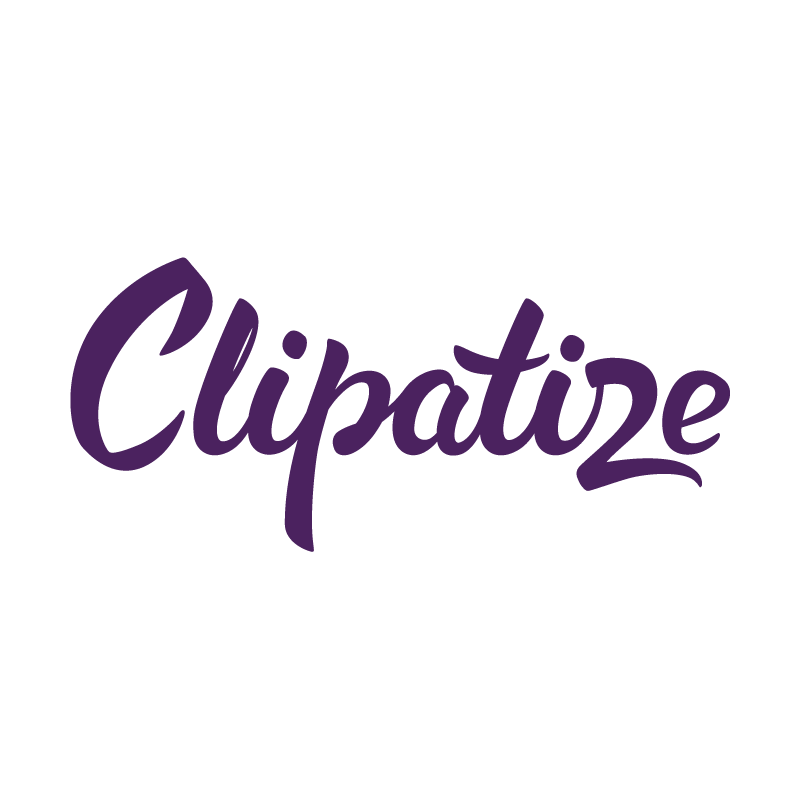While content or lead management are on everyone’s lips, for some reason media strategy is often omitted. It’s a great mistake, as the right media-mix is key to the effectiveness of B2B communication and sales.
When coming up with an action plan, B2B marketers keep measuring success using metrics related to content strategy, marketing platforms, or the recently hot LinkedIn Social-Selling. But it’s the success of reaching the right audiences that’s crucial in B2B marketing. That’s why moving beyond the usual channels should be the way to go for every forward-thinking marketer.
So let me list a selection of channels we use at Clipatize. I’m not saying it’s a be-all and end-all of media channels, rather a choice of those that proved very effective in promoting our clients from Poland and from the Middle East. At the same time, given that we launch dozens of campaigns every year, this list is a pretty good indicator of what really works in B2B media strategy.
The B2B marketing channels we use
TL;DR (Too Long, Didn’t Read): I believe in email marketing and paid channels - other activities can well complement this media core in B2B.
GDPR’s entry into force halted this channel for a while. This situation is slowly getting back to normal, as sales and marketing departments have verified appropriate consents and now take care of securing them for their current operations. At Clipatize, we generally use email for personalised lead nurturing drips.
It’s worth mentioning that email databases are also a great departure point for social media targeting. You can use them to identify the so-called similar groups (aka ‘look-alikes’) or create custom audiences (i.e. find people from your email database in a selected social channel).
SEO
SEO is one of the web traffic generation strategies. It seems to be quite well-known and self-evident, so I won’t dwell on it here. For those less in the know, I’ll only add that SEO takes many months of systematic efforts. It lends itself well to websites with long-term objectives, while it won’t cut it on transactional landing pages.These usually have a much shorter lifespan and deliberately limited content, so other promotion methods will be a better choice.
Personally, I’d go for paid channels, as proactive attitude of B2B clients is still uncommon, although it certainly depends on the industry and position of people you’d like to reach.
Despite often seen as expensive, LinkedIn can be a very effective channel if targeted at specific industries or professionals. Thinking tactically, you could start a campaign on LinkedIn and continue it on other channels, such as email or using a pixel tag on other social channels.
LinkedIn has changed a lot over the last year, both in terms of the growth of its active user base, but also the introduction of new ad formats. With the new items in place, advertisers can now go not only for the ordinary InMail, but also the likes of LinkedIn Lead or Video Ads.
A word of warning, though. LinkedIn is a great B2B advertising channel, but its organic reach is even lower than on Facebook (This statement might provoke comments, happy to engage in a dialogue :).
It may not be the first thing that comes to mind when thinking of B2B communication. So why bother with it?
First of all, today almost everyone is on Facebook. Secondly, it knows that much about its users that finding even niche groups becomes viable. Besides, advertising on Facebook is cheap enough to allow for messaging and targeting tests as a part of the process of building funnel traffic.
It can be used for remarketing, but also brand awareness and lead generation. You can check this guide for inspiration on the formats to make your posts stand out.
Another interesting option are paid sequential ads, which can prove useful for educational or nurturing purposes - both crucial in B2B communication focused on conversion.
Facebook is indeed a sound B2B channel. It proved itself in a series of our successful campaigns, including the ones for Fujitsu Polska, Canon Middle East, Microsoft Poland, or Amadeus MENA.
Google Ads
Google Ads can be very effective for the top of your funnel, especially in the area of brand- and product- awareness. Despite the B2B sales fixation, our experience proves that this type of activities is required if you want to unlock conversion success at later stages of a campaign or improve remarketing results (remind). You can check this case study to learn how ToFu activities benefited one of our clients.
Complementing banner ads with other SEM activities in a smart way also allows you to reach customers with specific needs, and thus address your sales target.
Collaboration with publishers (branded content / native advertising)
Cooperating with publishers helps to achieve two basic goals: increased reach and brand awareness boost. As the publisher guarantees access to their reader base, it’s easy to reach out to the relevant audience through mailings, banners, feature display, or client messages on the publisher’s social media channels. It can also be an additional leverage for the client's brand, reinforcing and validating their messages using the publisher's authority.
Activities with publishers are probably quite obvious and have a fairly long history. You could try out some less conventional ideas, go beyond banners and aim at real informational value for both readers and clients.
Remarketing
I’ve singled out remarketing here, even though it doesn’t constitute a communication channel as such, but rather a media tactic. However, in B2B marketing, it can and should be carried out by displaying the same message on numerous occasions or by constructing a sequence of messages, depending on your specific communication goals.
If you implement tracking tags (Facebook Pixel, LinkedIn Insight tag, etc.) on your website or landing page, you’ll be able to target groups in other channels (e.g. the cheaper ones). As a result, you’ll be able to optimise the nurturing cost, but also increase the reach or intensity of communication.
Remarketing (or retargeting) is in itself a broad topic, so I only wanted to signal here some tactics worth considering when planning your funnel. For many of our clients, remarketing and tracking pixel implementation, despite being common in consumer marketing, were a complete novelty.
Programmatic advertising is also worth considering
DMPs are often so data-rich that they’re able to find the current whereabouts of our B2B customers. Wherever that is :) We’re currently testing these solutions and share our insights soon.
B2B media strategies - 3 key takeaways
- Simultaneous use of numerous channels entails higher campaign management costs (preparation of messages, media plans, creative formats, operations), but at the same time gives you the opportunity to test and compare their performance (number of leads, as well as their quality, relevance and costs, etc.).
- Our projects carried out for the B2B segment usually deploy a rich media mix mainly composed of paid channels. They’re tested each time using a fraction of the budget.
- Paid media guarantee quick and precise access to target groups. The overall experience gathered from our projects demonstrates that satisfying media budgets in B2B range from just a few thousand dollar to up to 6-digit sums per campaign. As such, they constitute a maximum of a few pay-checks of a sales representative, but the revenue obtained thanks to the campaign’s results are many times higher than the initial investment.
I encourage you to pay more attention to media strategy and media-mix challenges in marketing and sales communication implemented for B2B brands. I’m well aware that this short piece only skims upon the surface of this topic; in the following posts I promise to reveal more about successful B2B media strategies.



